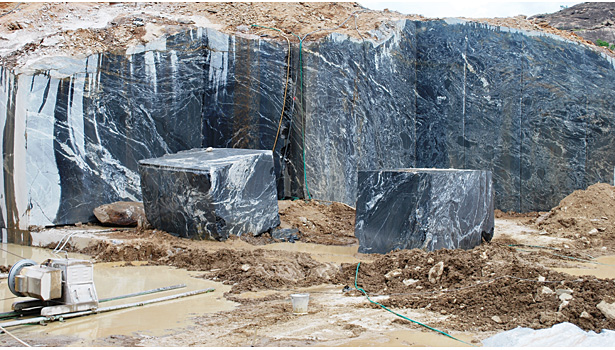Introducing Granite Quarries in South Africa Heritage: A Trip Via Quarries
Introducing Granite Quarries in South Africa Heritage: A Trip Via Quarries
Blog Article
Revealing the Mysteries of Granite Quarrying: Where Toughness and Sophistication Meet
The globe of granite quarrying is a world where the raw toughness of nature merges with human virtuosity to produce frameworks that stand the examination of time with an air of beauty. From the depths of quarries to the precise polishing in workshops, the process of transforming granite into architectural wonders is a complicated dancing of practice and technology. As we peer into the midsts of this ancient craft, we start to discover the hidden details that form the really essence of our constructed atmosphere.
The Beginnings of Granite Quarrying
In the annals of building history, the beginnings of granite quarrying are shrouded in a tapestry of ancient craftsmanship and geological wonders. Dating back to old Egypt and Mesopotamia, the extraction of granite from quarries noted the beginning of a journey that would eventually result in the creation of some of the world's most iconic structures.
Granite quarrying's origins can be traced to the experienced craftsmens who identified the rock's longevity and visual allure. Via a combination of primitive devices and sheer decision, these early quarry employees unearthed granite blocks that would come to be the foundation of human beings.
As civilizations evolved, so did the strategies of quarrying granite. The Romans, renowned for their design prowess, developed sophisticated approaches for extracting granite to construct monoliths, holy places, and roads that stood the test of time.
The heritage of these old quarrying techniques continues to form modern design, with granite continuing to be a symbol of toughness and style in building projects around the globe. (granite quarries in south africa)
Devices of the Quarrying Profession
The evolution of granite quarrying methods from ancient civilizations to modern times highlights the critical function played by the tools of the quarrying sell forming the sector's practices. In ancient times, quarrying tools were basic, frequently containing blades, hammers, and wedges made from materials like bronze or iron. These devices called for substantial manpower and time to extract granite obstructs from quarries.

In addition, Read Full Report the introduction of pneumatic tools and high-powered machinery has actually considerably reduced the physical labor needed in quarrying operations, enhancing employee security and productivity. As the quarrying market remains to introduce, the tools of the profession remain at the center of driving progression and forming the future of granite extraction.
Drawing Out Blocks of Granite
Using precision equipment and progressed techniques, the removal of granite obstructs from quarries has actually ended up being a sophisticated process in the modern-day quarrying market. The initial step includes recognizing the area and dimension of the granite down payment to establish the most effective extraction method. As soon as a suitable site is selected, the extraction process starts with the exploration of openings for the positioning of nitroglycerins. Controlled blowing up strategies are after that utilized to disintegrate the granite into convenient sections.

Polishing and Finishing Techniques
To accomplish a perfect surface on granite blocks, competent artisans use a collection of thorough sprucing up and ending up techniques. After the initial removal and forming processes, the granite blocks go through a detailed sprucing up stage to enhance their all-natural beauty and durability.
In addition to sprucing up, completing techniques are put on more improve the granite's appearance. These methods might consist of flaming, sharpening, or cleaning, each offering special appearances and coatings to suit various visual preferences. Flaming, for example, entails exposing the granite surface area to high temperature levels to produce a rough, textured surface, suitable for outdoor applications where slip-resistance is vital. Sharpening, on the various other hand, offers a matte finish that is smooth to the touch, best for interior kitchen counters and floor covering. By meticulously choosing and using these brightening and ending up strategies, artisans can transform raw granite blocks right into splendid items that display both stamina and beauty.

Environmental Influence and Sustainability
With the expanding emphasis on ecological consciousness in the market, granite quarrying practices are increasingly scrutinized for their effect on all-natural sources and long-term sustainability. In addition, the transport of granite from quarries to processing facilities creates carbon discharges, additionally contributing to ecological degradation.
To minimize these impacts and ensure sustainability in granite quarrying, market stakeholders are adopting different measures. Executing advanced modern technologies to reduce power consumption and water use, reclaiming quarried land for eco-friendly reconstruction, and promoting responsible sourcing techniques are some techniques being used. Furthermore, certifications such as the Woodland Stewardship Council (FSC) and the Leadership in Energy and Environmental Layout (LEED) assistance customers identify eco-friendly granite products.
Conclusion
To conclude, granite quarrying is a process that requires specialized devices and methods to remove blocks of granite and brighten them to a high level of finish. While directory the environmental influence of quarrying can be considerable, efforts are being made to boost sustainability techniques in the sector. On the whole, granite quarrying is a fragile equilibrium between harnessing the toughness and style of this all-natural stone while minimizing its influence on the environment.
Report this page